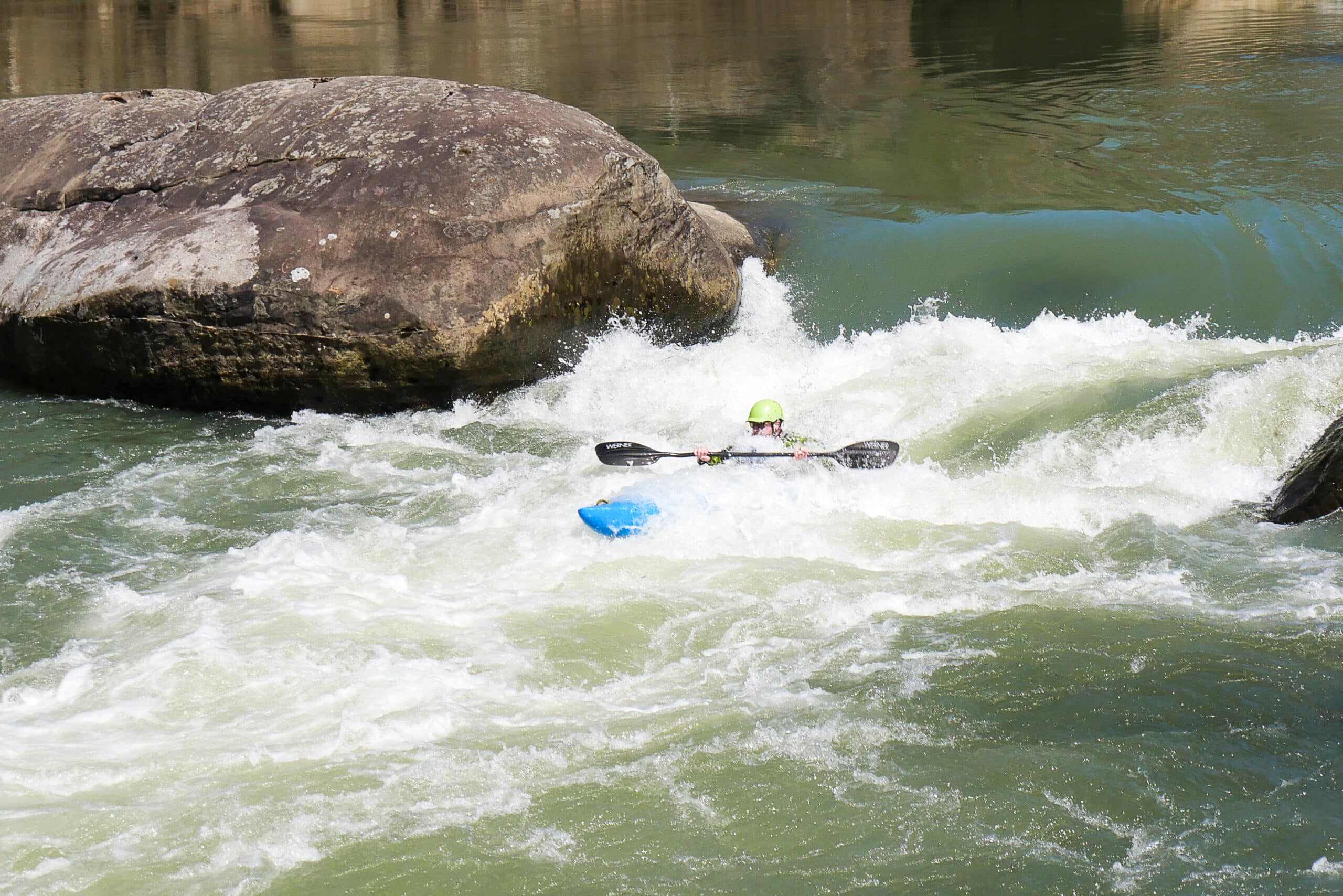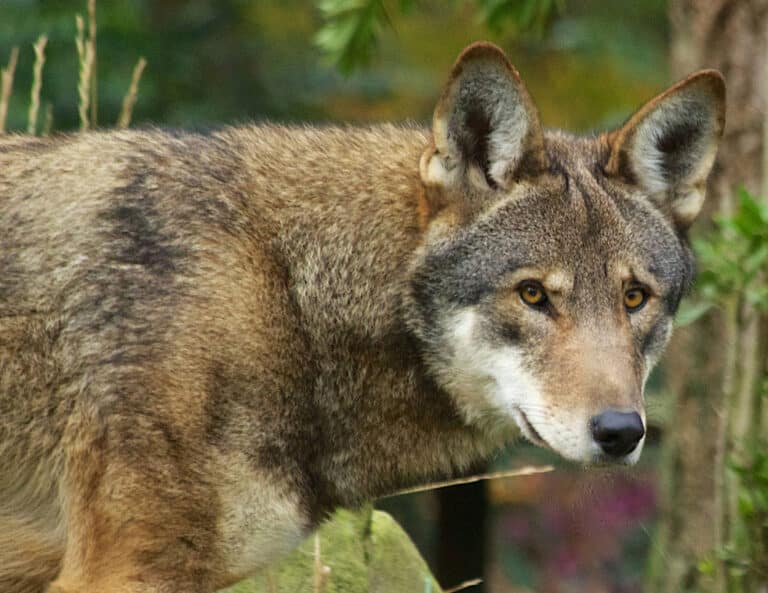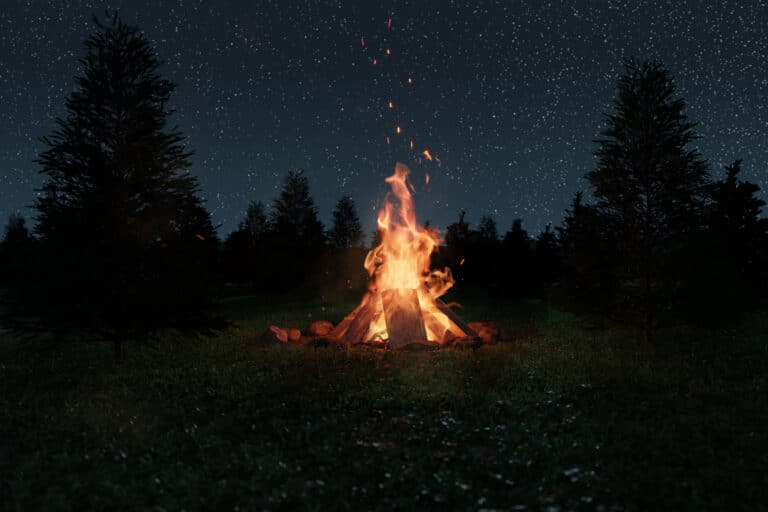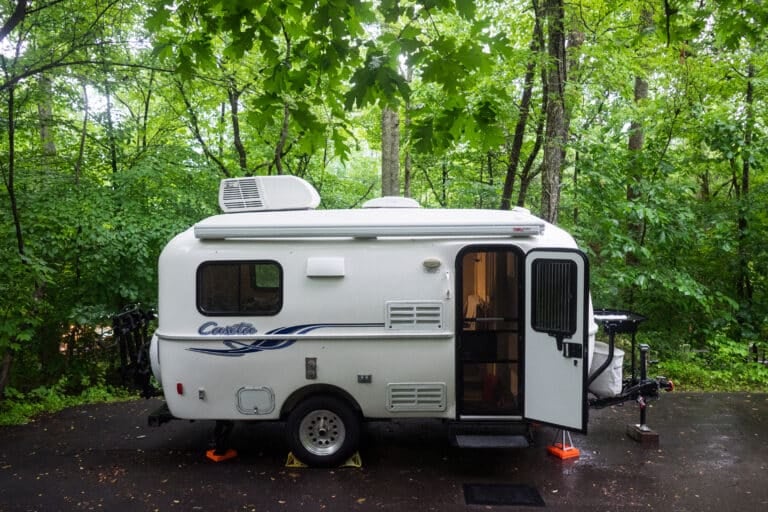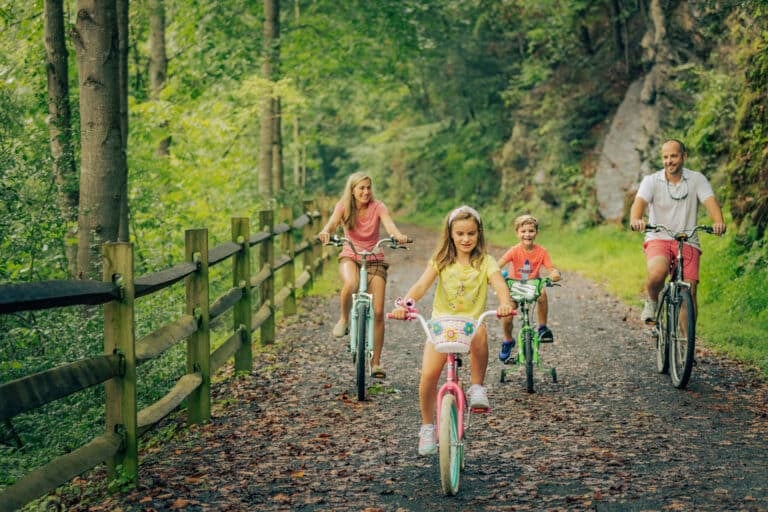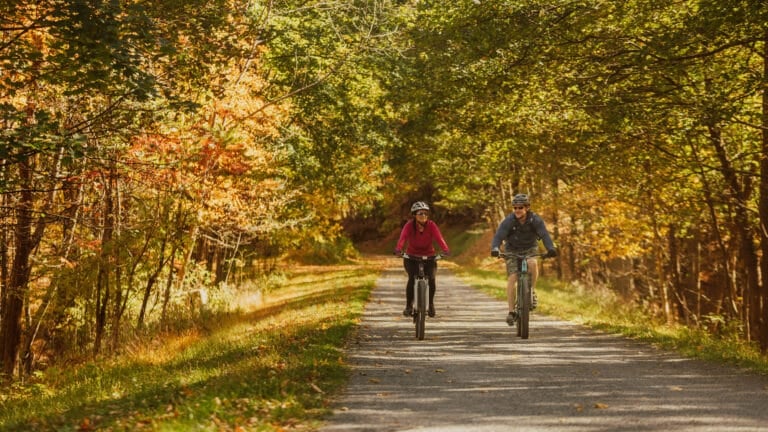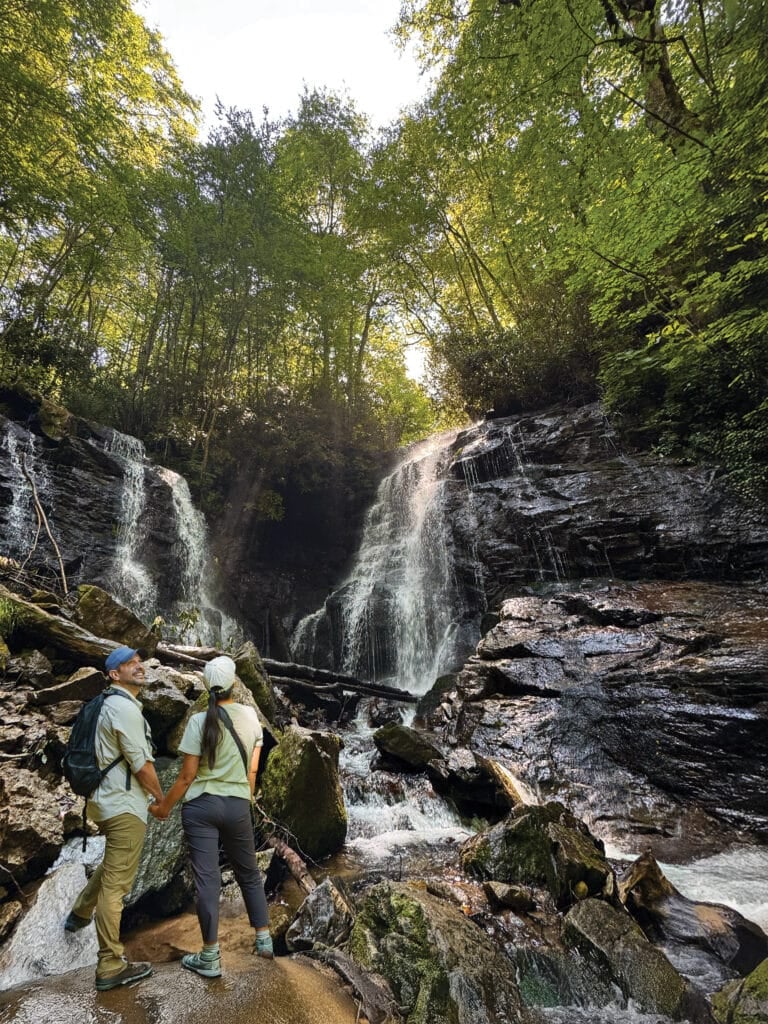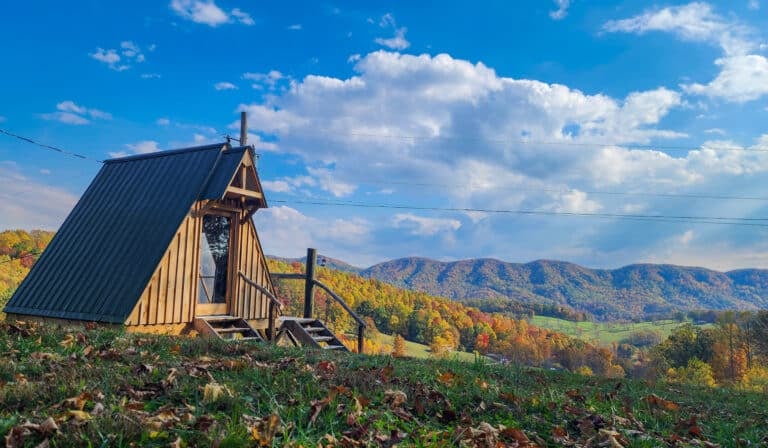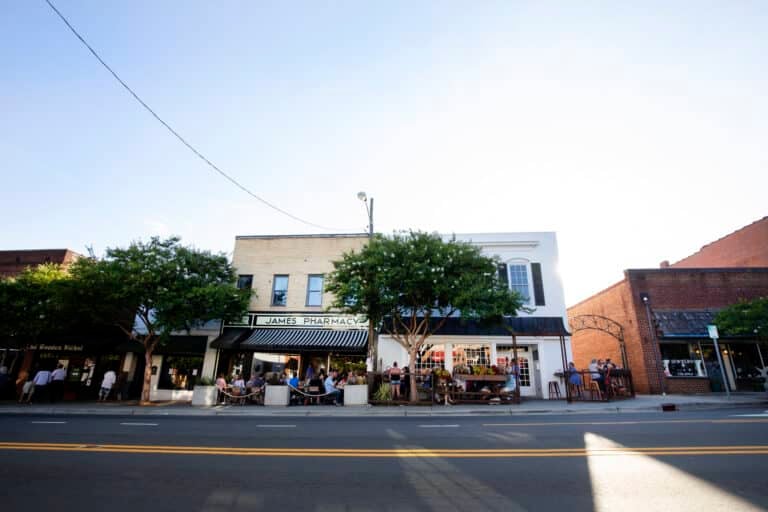After a self-supported trip on a rugged Southern river, an adventurer reveals tips and best practices for overnight kayaking and rafting trips
After driving for hours into the night, each of us coming from different parts of the country, my buddy Curtis and I awoke in the hard beds of our pickup trucks. Without cell service, we weren’t even sure which state we were in—Tennessee or Kentucky. It was a cold morning in mid-March, and we already felt sore before we’d even started kayaking the Big South Fork of the Cumberland River.
“What the hell?” said Curtis.
While stretching our legs in the fog-filled parking lot, we realized we were surrounded by unimpressed people with empty stares. Luckily, this wasn’t some anti-paddler cult, just an outdoor mining museum filled with creepy cutouts of 1940s residents. We were at the wooded Blue Heron river access—on the Kentucky side, I checked, of Big South Fork National River and Recreation Area—about to run shuttle for a 34-mile river trip.
There was a time when Curtis and I traveled around the country to kayak and raft whitewater rivers through mountains and desert canyons. Between us, we had paddled dozens of overnights. Some were easier or harder than this one, and some trips lasted several weeks. Then family and work responsibilities got in the way. After an unexpected break lasting five years, we were finally resuming our multiday whitewater adventures. Cue the rusty mistakes and hard-knock lessons. For example, despite talking a big game about practice-packing at home, both of us had arrived without having paddled our fully loaded boats. A classic error that I’d come to regret soon enough.


Multiday Paddling Trips 101
There’s something particularly exciting about multiday paddling trips. You leave the developed world behind and probe deeply into backcountry waters. Since learning to paddle can be challenging enough, it’s best to feel confident on the water before you embark on your first self-guided overnight. Alternatively, joining a guided multiday raft, kayak, or canoe trip can be a good way to start, helping you learn the skills for future DIY adventures.
In general, rafts hold the most gear, food, and people. When fully loaded, these massive beasts are typically rowed with oars. Rafts are particularly popular for long-distance river trips, especially whitewater classics out west. Many kayakers love to have raft support for obvious reasons. They get their gear and beer hauled down the river, which is the closest a dirtbag kayaker will ever feel to royalty.
Rafting multidays are somewhat like car-camping road trips down a river, while self-support kayaking or canoeing is like backpacking out of a boat. That said, canoes are not too far behind rafts in terms of storage capacity. They’re more common on flatwater and easy whitewater, up to class II, though skilled paddlers will take them on harder whitewater. Meanwhile, decked kayaks are great for self-support whitewater trips but can also be used for flatwater.
Regardless of your watercraft choice, overnights make for heavy boats that are harder to maneuver, meaning you’ll want to be an experienced paddler in good physical condition. Even if you’re comfortable with whitewater rapids, it’s often a good idea to plan your first overnight at an easier river or lake. You can ease into controlling a heavier boat before progressing to harder waters.
Recognizing this, Curtis and I did a two-day trip with friends last summer on the remote Eleven Point, a national scenic river in the Missouri Ozarks. The 19-mile section from Greer Crossing to Riverton is one of the best class I-II overnights in the country. The banks are lined with lush hardwood forests and limestone bluffs. The current is swift with frequent riffles, and numerous springs keep the river running year-round.




Photos by Mike Bezemek
Big South Fork: Confluence to Leatherwood Ford
From the gravel lot at the end of John Long Rd, Curtis and I dragged our loaded kayaks down a steep quarter-mile trail to the confluence of New River and Clear Fork, where the Big South Fork starts. This is one of my favorite NPS units in the Southeast, with nearly 200 square miles of semi-wilderness on the Cumberland Plateau. There are dense forests, natural stone arches, and rugged trails for hiking and biking. Sandstone cliffs line a remote river gorge with whitewater rapids and long flatwater stretches. Most of the camping is primitive and there’s limited road access.
Planning is a big part of multiday paddling trips. Today was turning into a warm sunny day, but the water would be chilly, and the coming days were forecast to become colder with possible rain. So we decided to wear full drysuits, which protect paddlers from shifting weather and cold-water immersion. To avoid overheating, we wore hiking clothes while transporting our boats. Then we returned to the shuttle vehicle to change and retrieve PFDs and helmets.
“How’s my trim line?” I asked when we pushed off into the current.
“You’re sitting low, but at least your bow’s down,” replied Curtis.
A loaded kayak that floats evenly or minorly front-weighted is often best. With a stern-heavy boat, you’ll catch edges on the back-deck, which can flip you over. Thus, I’d packed some heavier items like a backpacking chair, camp fuel, and extra drinking water into a bow-bag in front of my feet. That way, I’d hopefully plow over the tops of waves and holes.
Despite this, my kayak still felt over-loaded, uncomfortably tight, and somewhat imbalanced from side to side. In the past, I’d mostly used my long boat for summer overnights when minimal gear was needed. I’d been meaning to upgrade to a larger size with more volume, and a higher weight capacity for colder seasons, but never did. Luckily, most of the class III-IV whitewater comes in the uppermost seven-mile section, when we’d hopefully be fresh enough to muscle through.
After nearly a mile of read-and-run class II+, I was feeling confident when we reached the “big three.” We skirted the steep Double Drop on the far left before punching through holes in Washing Machine and The Ell. My boat was edgy and riding low in aerated water, but by staying straight and paddling hard, I eventually resurfaced.
Most rapids on the scenic Big South Fork are created by massive sandstone boulders that long ago tumbled from the cliffs into the wide channel. As a result, there are hazardous undercuts to avoid, where current passes underneath protruding rocks that can trap a swimmer or pin a kayak. For that reason, this upper run is best for paddlers with class III-IV experience.
Since there’s no dam on the naturally flowing Big South Fork, the primary season is fall to spring, when leafless trees allow more runoff to reach the river. Paddlers should watch for rain in the Oneida, Tenn., area and keep an eye on the USGS gauge at Leatherwood Ford. While more maneuverable kayaks might scrape past exposed rocks at lower flows, down to around 1,000 CFS (cubic feet per second), we prefer higher flows when running loaded kayaks that are slow to respond. That day we started with 1,800 CFS, and we wouldn’t have wanted much less than that.
With each rapid, we approached gradually, moving from eddy to eddy, while boat-scouting for a safe line through. When we couldn’t get a clear view over the horizon, we beached our boats and stretched our legs while scouting from shore. Some rapids were short and punchy, like Oh Shit. Others, like Honey Creek, were longer and technical. After seven miles of fun whitewater, we had lunch just above Leatherwood Ford, figuring the rest of the trip would be a breeze.
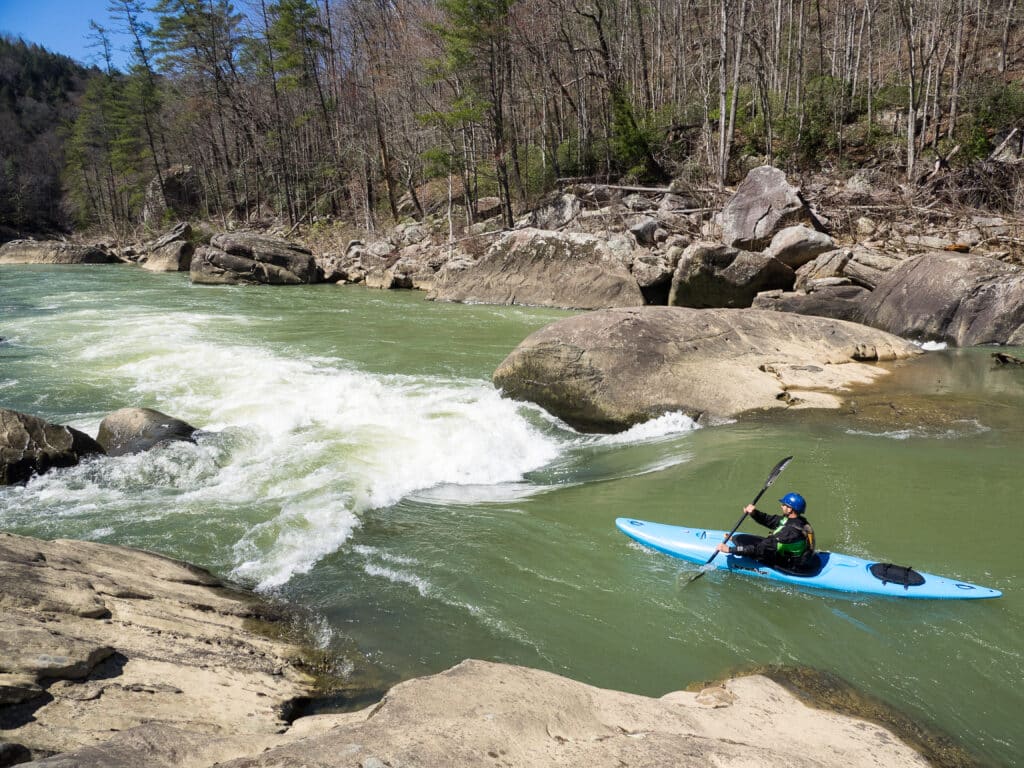
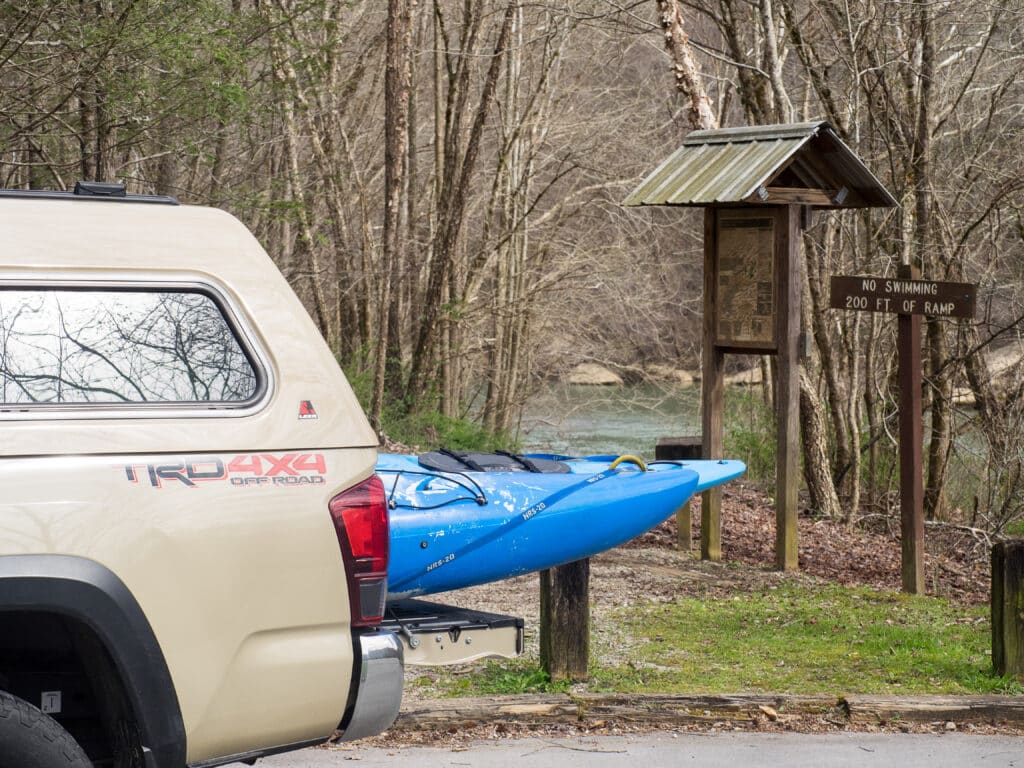
Classic Multiday Paddling Trips: Southeast and Beyond
When you look closely, you’ll find multiday paddling trips accessible across the entire country, with the West being the top region. Stunning flatwater trips can be found from the Upper Missouri River Breaks in Montana to the Green and Colorado Rivers in the Canyonlands region of Utah. Whitewater options range widely, including the class III Rogue River in Oregon, the class III-IV Middle Fork or Main Salmon in Idaho, the Class IV-V Grand Canyon in Arizona, and many more.
In the Southeast and Mid-Atlantic, day trips tend to be more popular, given that shorter sections often fall between frequent smaller dams. That said, there are numerous options for overnights. Class I-II multiday trips are possible on the undammed Delaware River, especially upper stretches in New York, Pennsylvania, and New Jersey, including through the Delaware Water Gap National Recreation Area.
A variety of overnights are possible in West Virginia, including the class II-III New River Gorge and the class IV-V Gauley. North Carolina has many class I-II options, from the upper New River to the Lumber River and lower Roanoke River on the coastal plain. Further south, the Okefenokee Swamp in Georgia and Everglades National Park in Florida are popular for flatwater paddling and platform camping.
Big South Fork: Leatherwood Ford to Station Camp to Blue Heron
For our final 27 miles, Curtis and I tacked on two lesser-paddled runs: The eight miles from Leatherwood Ford to Station Camp, followed by 19 miles to Blue Heron, which is mostly long flatwater pools broken occasionally by class I-II riffles. However, there are two exceptions, two big class IV rapids that are often portaged due to undercuts. Angel Falls, which we ran, is two miles downstream from Leatherwood Ford. Devils Jump, which we later portaged, is one mile upstream from Blue Heron. For this reason, most paddlers seeking class I-II will paddle downstream from Blue Heron.
Above Angel Falls, we beached our boats and hiked a long trail to scout from river-right. At this level, the rapid looked runnable on center-right, a line that avoided the river-left undercut. Sure enough, our lines through Angel Falls started well enough, and we were soon clear of the undercut.
But the moment I relaxed, I caught an edge in the swirling waters at the bottom and flipped. From manhandling my overloaded boat for the past nine miles, my hips felt worn out. When I set up to roll, my poorly packed bow-bag shifted. My right foot slid forward, and my knee slipped out of the thigh-brace. Feeling exhausted, I gave up on rolling and wet-exited. I swam my boat and paddle into the nearest eddy.
They say every kayaker is just between swims, and there’s no shame in that. This was my first swim in years, and it was a good reminder that I needed to spend more time—both on conditioning and outfitting my boat—before future self-supported trips.
That evening, we built our tents at Station Camp. We stared weakly at a fire and broke out some river-cooled (aka warm and skunky) beers. We toasted our successes and failures, to reach this point.
“It’s the end of day one,” I said. “And I can barely lift this can.”
“No joke,” said Curtis. “And we still have nineteen miles left to go.”
We had even longer to go before we’d be ready to resume paddling week-long trips, making 15-20 miles per day. But they do say that self-supported kayaking isn’t meant to be easy. So, at least we were doing something right.
Cover photos: The author, riding low in his gear-loaded boat. Photo by Curtis Ahlers.
